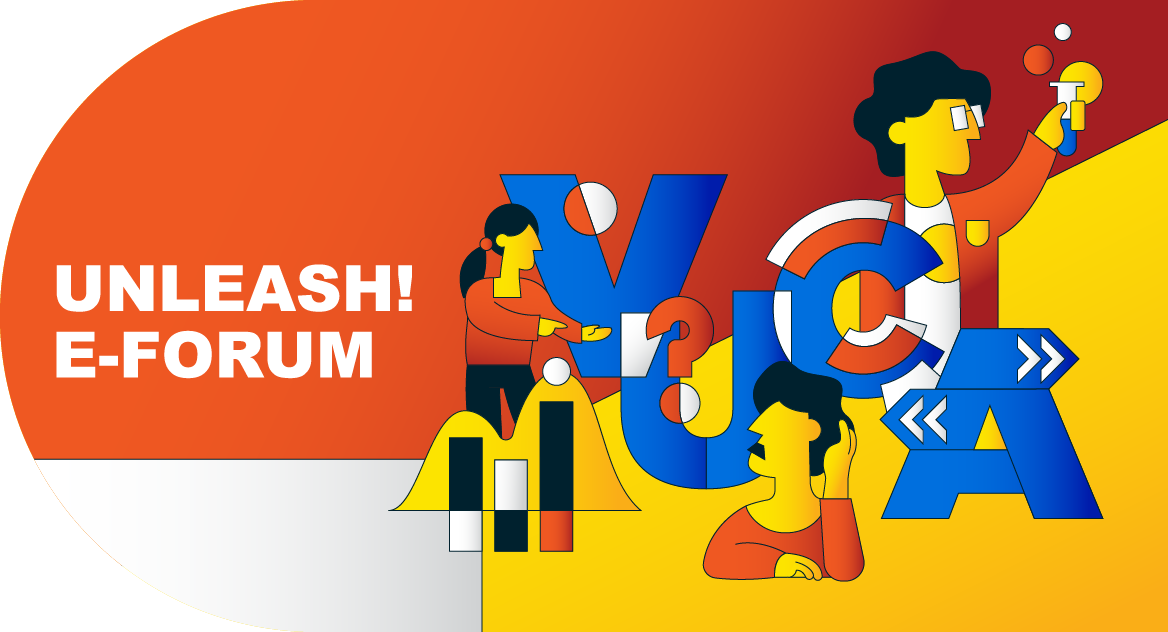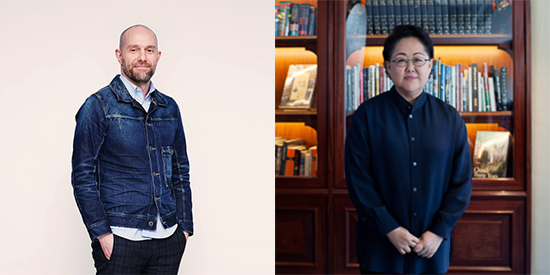5 Ways Design Thinking Can Turn VUCA Around

It would hardly be an overstatement to say that the world has never felt a stronger sense of VUCA — Volatility, Uncertainty, Complexity and Ambiguity – than in the last few months. More than ever, we need an innovative approach like design thinking to guide us through such unpredictable conditions. In our Unleash! Design Thinking e-Forum, successfully held on 30 and 31 July, cross-disciplinary experts and industry leaders shared their insights and experiences in applying design thinking professionally. Here we summarise it into 5 ways of how design thinking can help us deal with the increasingly VUCA world.
1. Design thinking leads us to rethink what our organisations really are about
“Whilst we grapple with everyday challenges, we need to start thinking today what kind of future we would like to build. Covid-19 has accentuated our appreciation of what it means to be human and what our basic human needs are,” Prof. Eric Yim, JP, Chairman of Hong Kong Design Centre said in the forum. It also presents new opportunities for organisations to rethink and reinvent their processes, models, positioning and organisational structure for the new normal. Prof. Yim cast light on how design thinking can be a potent guide in helping us to:
- Define and redefine the core purpose of the organisation
- Discover and rediscover what really matters most to customers
- Explore potential new growth areas in collaboration with internal and external stakeholders
- Manage the costs and the risks of innovation through a rapid prototyping process
- Win the hearts and minds of employees and customers during the innovation journey
“It is high time we make design thinking an integral part of our organisation and our city,” Prof. Eric Yim, JP, Chairman of Hong Kong Design Centre said.
Whilst we grapple with everyday challenges, we need to start thinking today what kind of future we would like to build. Covid-19 has accentuated our appreciation of what it means to be human and what our basic human needs are.
2. Design thinking guides us to understand how people change
In the dialogue session of Charles Hayes, Executive Managing Director, Asia and Partner at IDEO, and Ada Wong, Director of Ednovators and Supervisor at HKICC Lee Shau Kee School of Creativity, they delved into the change in people’s mindset, values, behaviours and priorities in the wake of the pandemic, reminding us we are in the middle of a paradigm shift. Design thinking equips us to map out these changes. Charles observed the changing consumption patterns around safety and personal improvement, the concept of multiple identities shifting between the private/personal and public/professional, and, most important of all, people are coming to terms with the notion of constant change.

Left: Charles Hayes, Executive Managing Director, Asia and Partner at IDEO
Right: Ada Wong, Director of Ednovators and Supervisor, HKICC Lee Shau Kee School of Creativity
Charles reminded us, “Behind process and a deeper level of what design thinking tries to advance is this notion of how we can, much more on a human level, understand one another, be curious about what is going on, try to make sense of the things around us, recognise our own vulnerabilities and assumptions, and learn to be as highly adaptive and as open and collaborative as we can.”
3. Design thinking drives cross-disciplinary collaborations
The problems we are facing today has reached a complexity impossible to be untangled by experts from a single field. Design thinking advocates bringing in stakeholders and experts from different fields to the problem-solving process. In the forum’s “Co-creating Innovation” panel, design thinking leaders from Denmark, Singapore and Taiwan threw light on how cross-disciplinary collaborations brought their projects to a new dimension. In particular, ThinkPlace Singapore used nasi lemak, a spicy coconut rice dish loved nationally, to prompt multiple stakeholders — consumers, farmers, manufacturers, government and NGOs — to identify food security problems in the country. This case sharing, presented by their Principal Debbie Ng, is an inspiration for how to rope in stakeholders in an engaging way.
Debbie Ng, Principal, ThinkPlace Singapore
4. Design thinking lets us fail fast, learn faster
We have all seen how a great number of industries speeded up their innovation process for health care to act against the pandemic. From manufacturers like 3M to luxury brands such as LVMH, corporates repurposed their production lines to make urgently needed medical supplies. A key to success for such socially responsive manufacturing is rapid prototyping, an essential element of design thinking. In the “Rethinking Medical and Health Services” panel, health care professionals from Hong Kong, China and the Netherlands stressed the importance of bottom-up innovations — trying things out at the working level instead of imposing changes from the top. Illustrating Tencent Health Care’s Covid-19 Toolkit and innovation culture, the company’s Vice President Alexander Ng said, “Be prepared to be wrong and fail… If getting things wrong was going to paralyse what we do, we would never have done what we did.”

Alexander Ng, Vice President, Tencent Health Care
Be prepared to be wrong and fail… If getting things wrong was going to paralyse what we do, we would never have done what we did.
5. Design thinking builds an innovative workforce
The broad applicability of design thinking sees its use in innovating wide-ranging organisational aspects, such as human resources. Local talent development professionals shared their experiences in introducing design thinking into their organisations’ cultures in the “Building a Human-centric and Innovative Workforce” panel. They agreed that after design thinking training, their colleagues became more agile, critical, innovative, collaborative, willing to experiment and learn from mistakes. Teddy Liu from Hong Kong Management Association gave us some tips — start from the pain point of your colleagues and align their interests with design thinking. Seeing real value for themselves will motivate them to apply design thinking in their work.

Teddy Liu, Committee Member of People Development Management Committee, Hong Kong Management Association
“The human lens of design can help us make better sense of our challenges, empower us to re-strategise and innovate with purpose and impact,” said Dr Edmund Lee, Executive Director of Hong Kong Design Centre. As one participant suggested, with the design thinking lens we can reinterpret VUCA as Vision, Courage, Understanding and Adaptability, and pioneer the VUCA 2.0 era.
The human lens of design can help us make better sense of our challenges, empower us to re-strategise and innovate with purpose and impact.
To find out more about design thinking, register for Unleash!’s Train-the-Practitioner Programme and Train-the-Facilitator Programme. Course details can be found here.